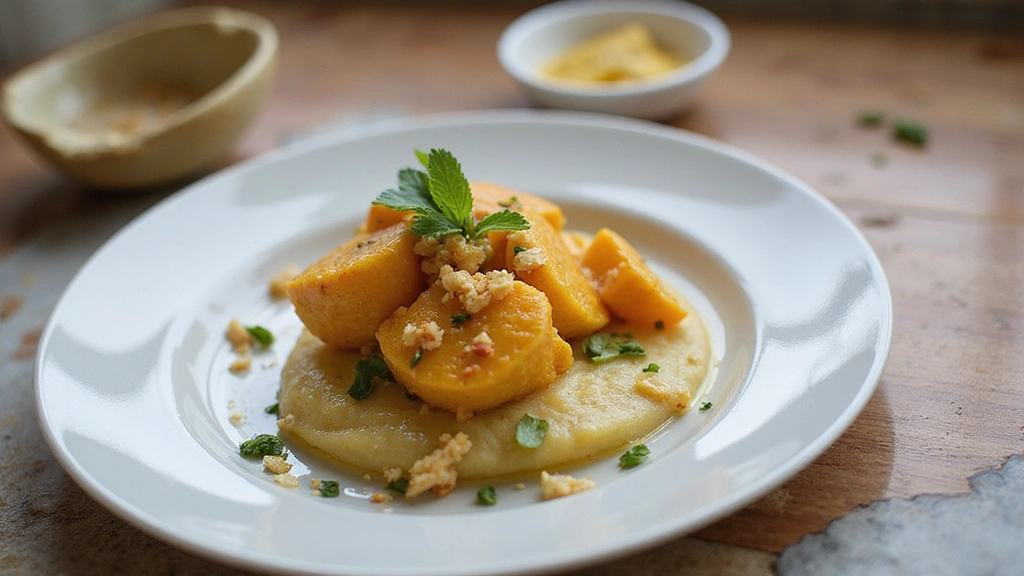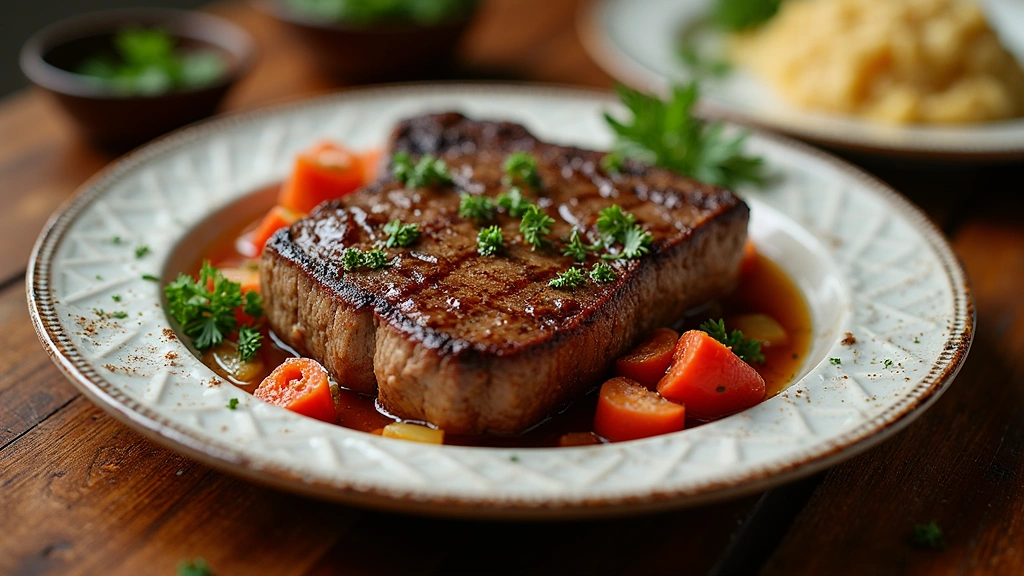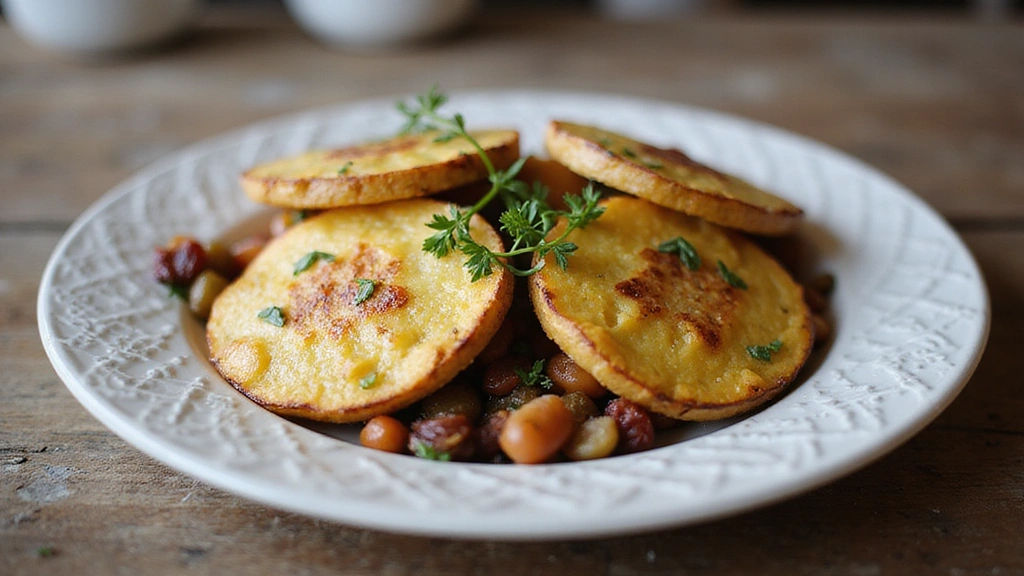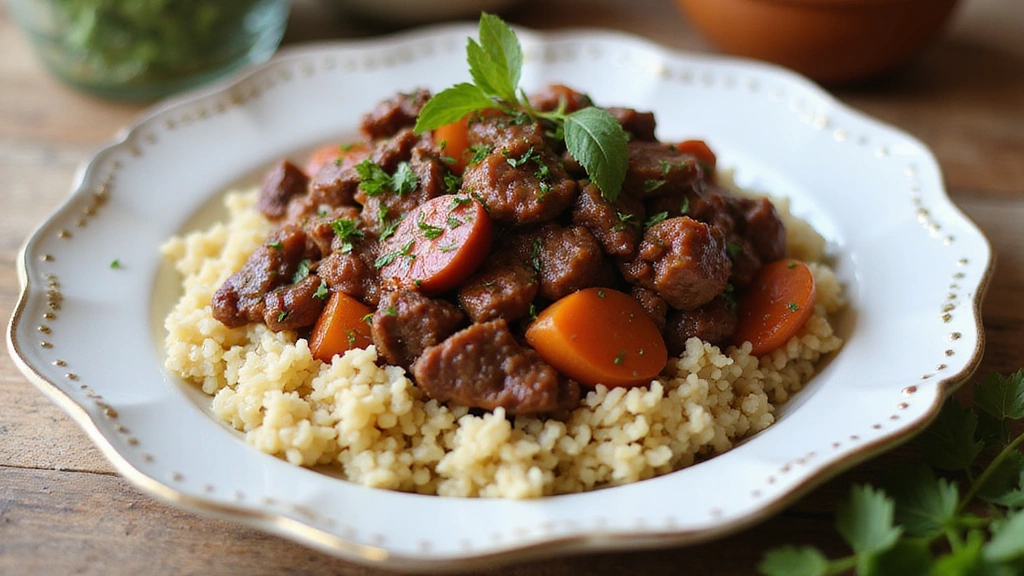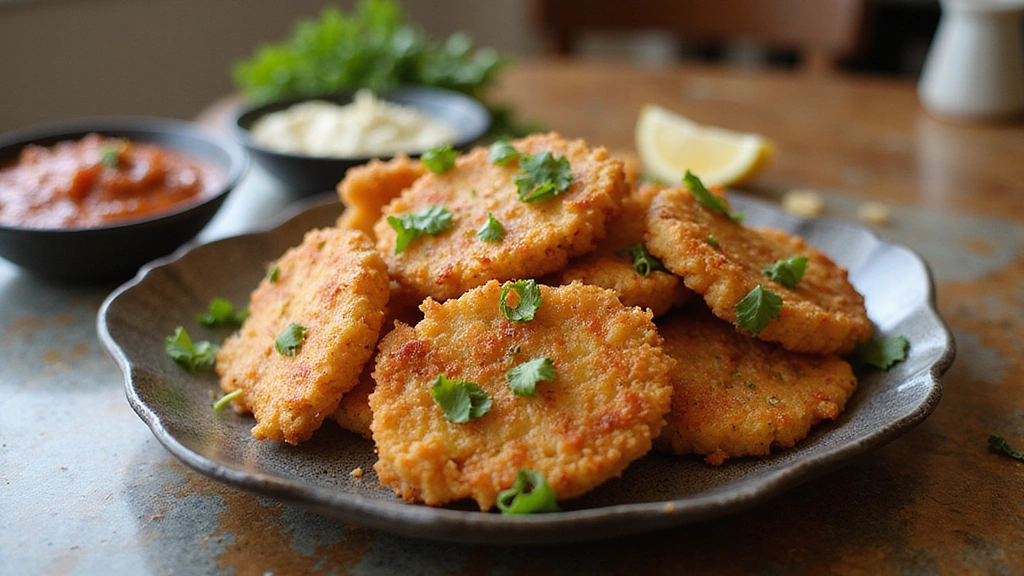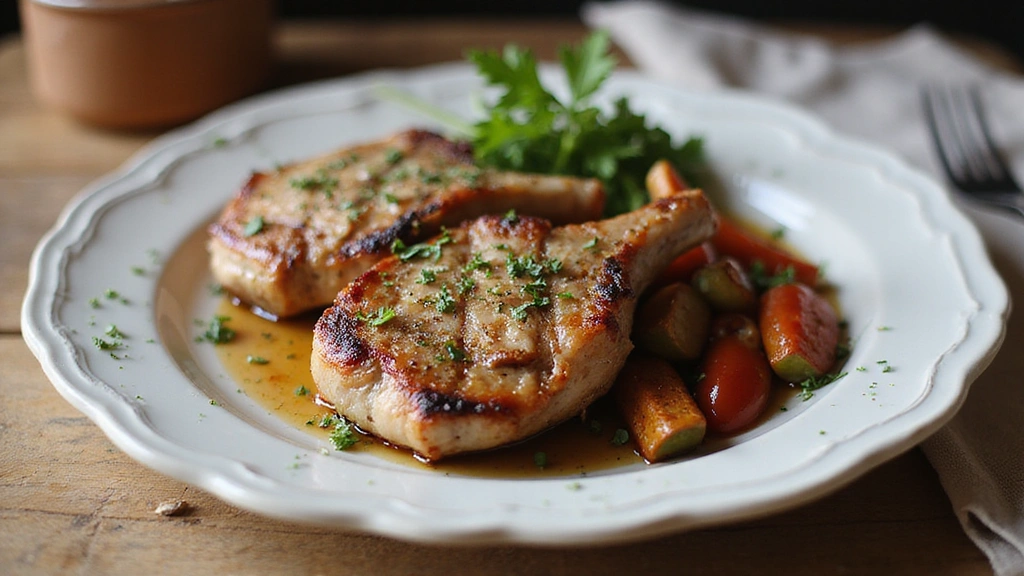Introducing gentle baby food recipes is a delightful way to explore the world of flavors for your little one.
These purees are not only nourishing but also introduce essential tastes and textures that can shape your baby’s palate.
As a parent, I found joy in creating these simple yet nutritious meals that my baby eagerly enjoyed.
Whether you’re a first-time parent or experienced in the kitchen, these purees make it easy to provide wholesome, homemade food for your growing child.
The History and Cultural Significance
• Gentle baby food recipes have roots in various cultures, adapting over time to meet the nutritional needs of infants.
• Historically, parents have mashed and pureed seasonal fruits and vegetables, ensuring their babies receive the best nature has to offer.
• In many cultures, introducing solid food is a celebrated milestone, often marked by family gatherings and special rituals.
• While baby food has evolved with the introduction of commercial options, homemade purees remain a cherished tradition for many families, promoting health and bonding.
Recipe Overview
Nutritional Information (per serving)
Ingredients
Essential Equipment Guide
Blender or Food Processor: This tool is crucial for achieving a smooth texture in baby food. Look for models with a strong motor and multiple speed settings for versatility.
Steamer Basket: Steaming vegetables retains more nutrients compared to boiling. A collapsible steamer fits most pots and allows for easy storage.
Ice Cube Trays: Perfect for portioning purees, these trays let you freeze small amounts for future meals. Opt for BPA-free silicone for easy release.
Preparation Methods
Steaming: This gentle cooking method helps preserve nutrients and flavor. Use a steamer basket over boiling water, and cook until vegetables are tender but not mushy.
Pureeing: After cooking, transfer ingredients to a blender or food processor. Blend until smooth, adding a little water or breast milk for the desired consistency.
Freezing: Portion purees into ice cube trays for easy freezing. Once frozen, transfer them to labeled freezer bags for up to three months.
Step 1: Prepare Ingredients
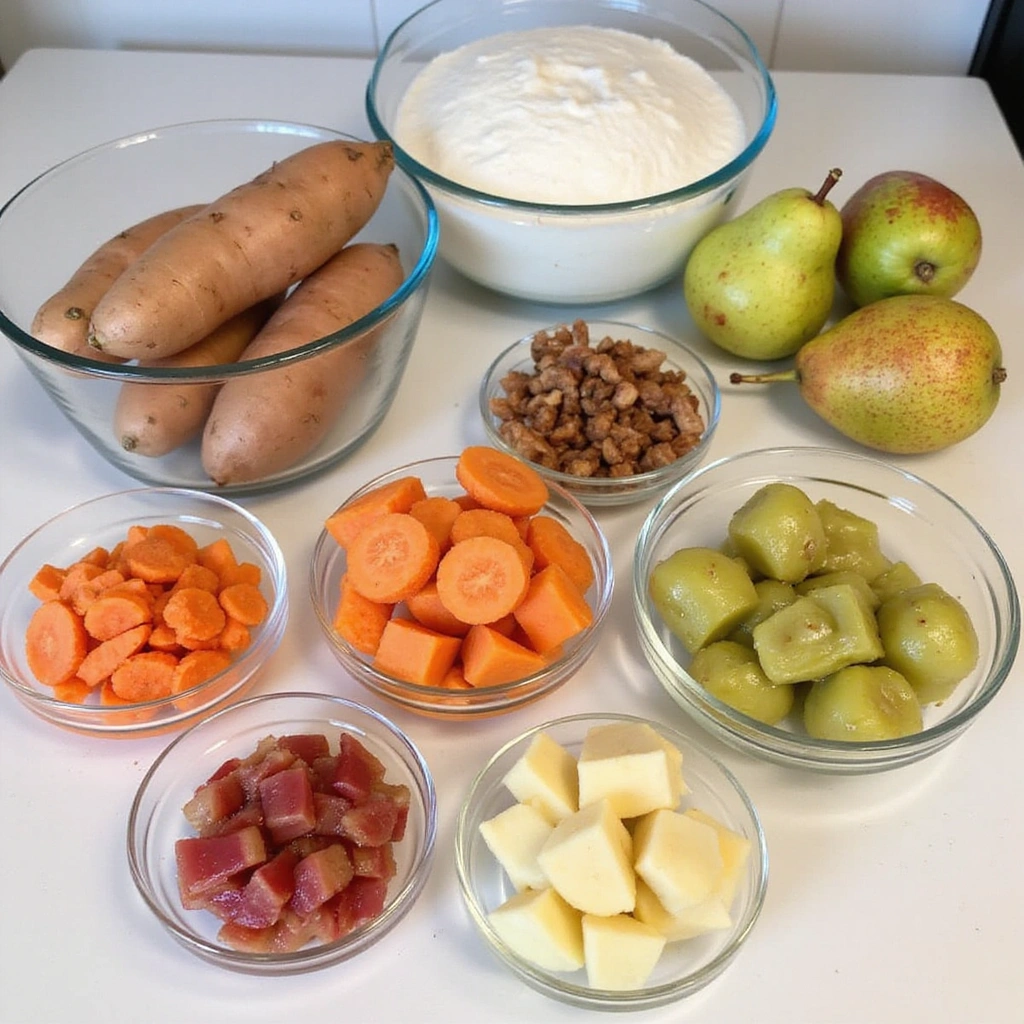
Gather all your ingredients and wash them thoroughly.
Peel and chop the sweet potatoes, carrots, and pears into small, even pieces.
This ensures even cooking and makes the blending process easier.
Set aside all ingredients in separate bowls for easy access during cooking.
Step 2: Steam the Sweet Potatoes
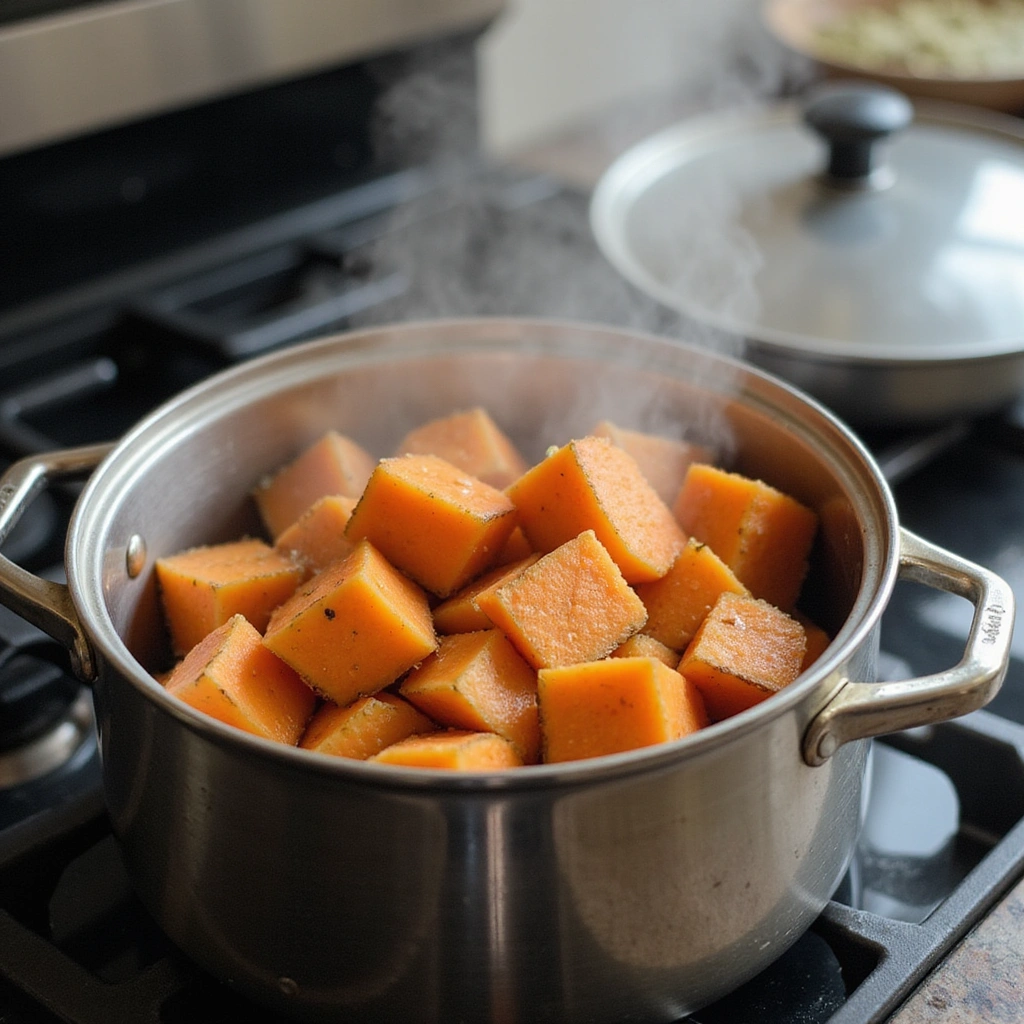
Fill a pot with water and place a steamer basket inside.
Add the sweet potatoes and cover the pot.
Steam for about 10-12 minutes, or until the sweet potatoes are tender enough to pierce with a fork.
Keep an eye on the water level to prevent it from evaporating completely.
Step 3: Steam the Carrots and Peas
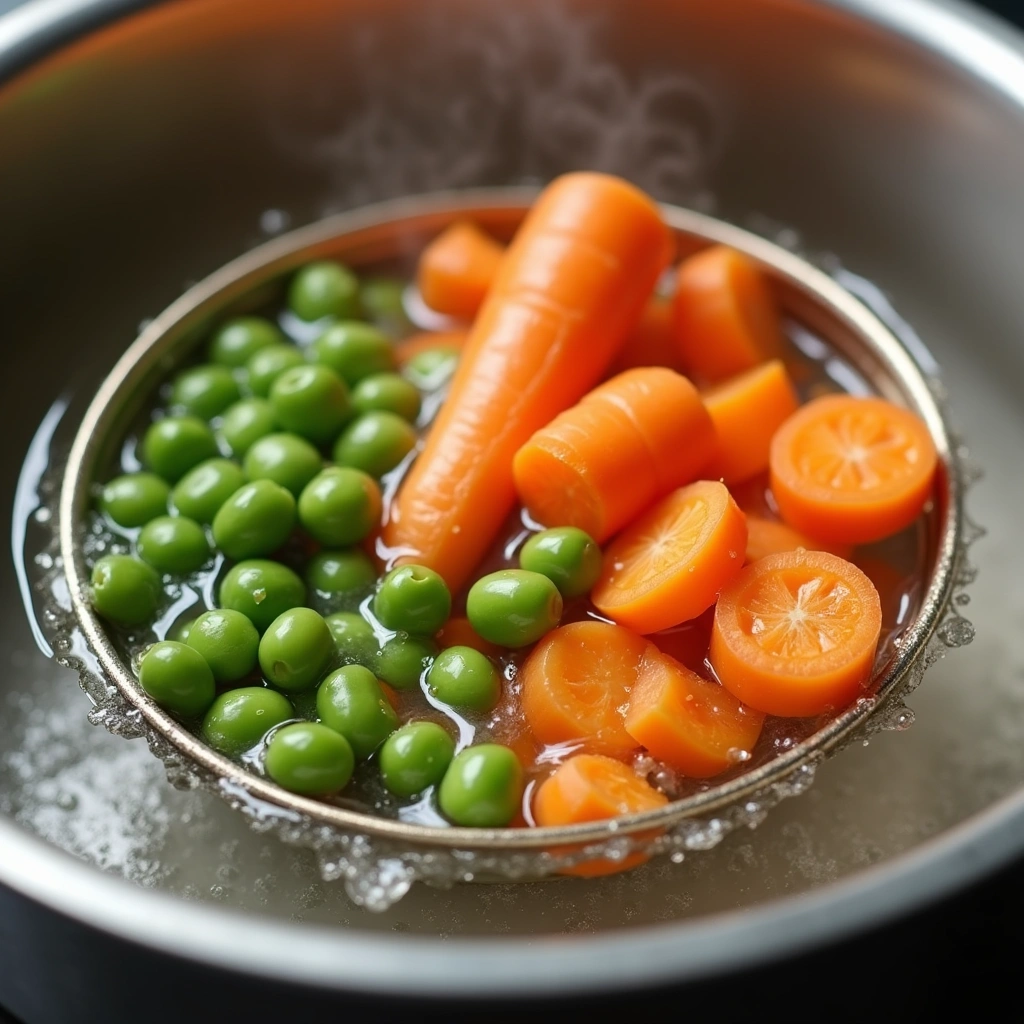
Once the sweet potatoes are done, remove them and set aside.
Add the chopped carrots to the steamer basket and steam for about 5 minutes.
After 5 minutes, add the peas and steam for an additional 2-3 minutes.
Both vegetables should be tender but vibrant in color.
Step 4: Puree the Ingredients
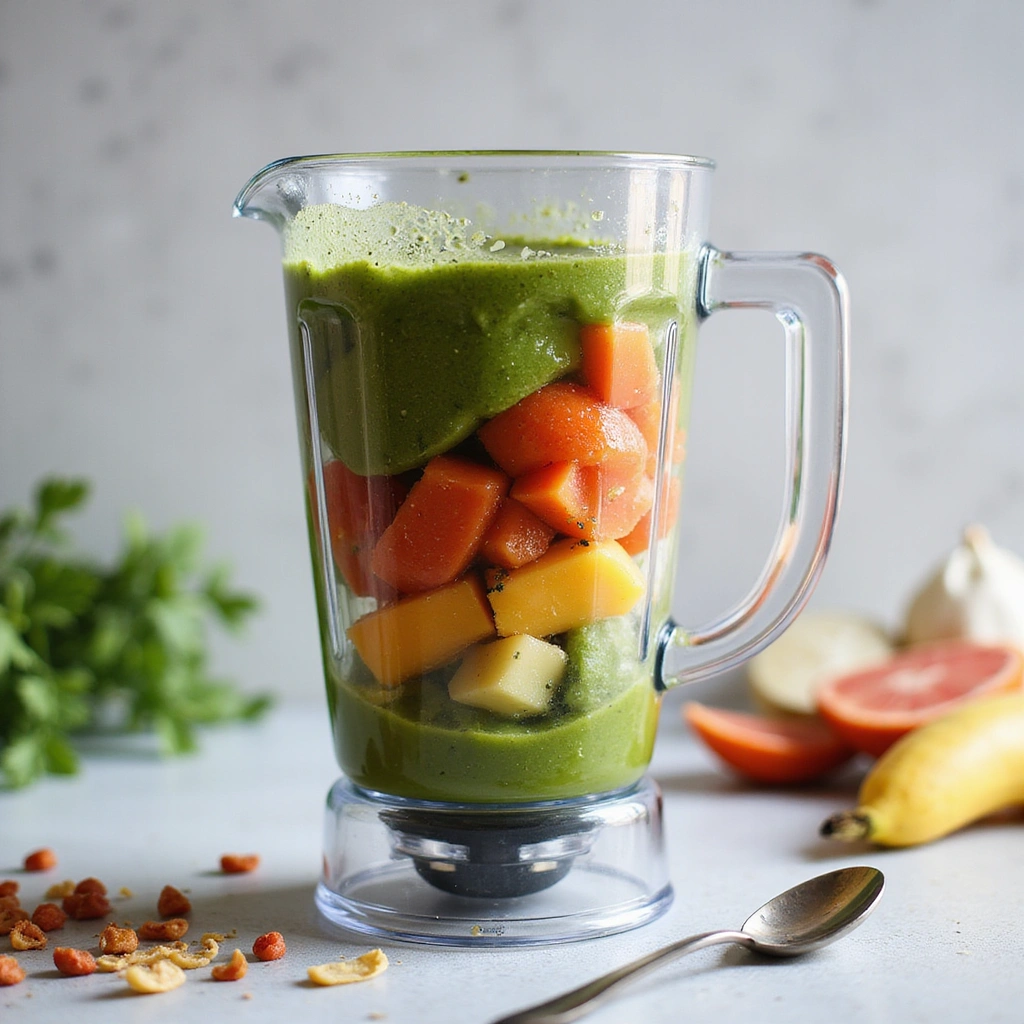
Transfer the steamed sweet potatoes, carrots, and peas into a blender.
Add the chopped pears and lemon juice to the blender for added flavor.
Blend on high until smooth, adding water or breast milk as needed to reach the desired consistency.
Taste the puree to ensure it’s smooth and palatable for your baby.
Step 5: Check Consistency
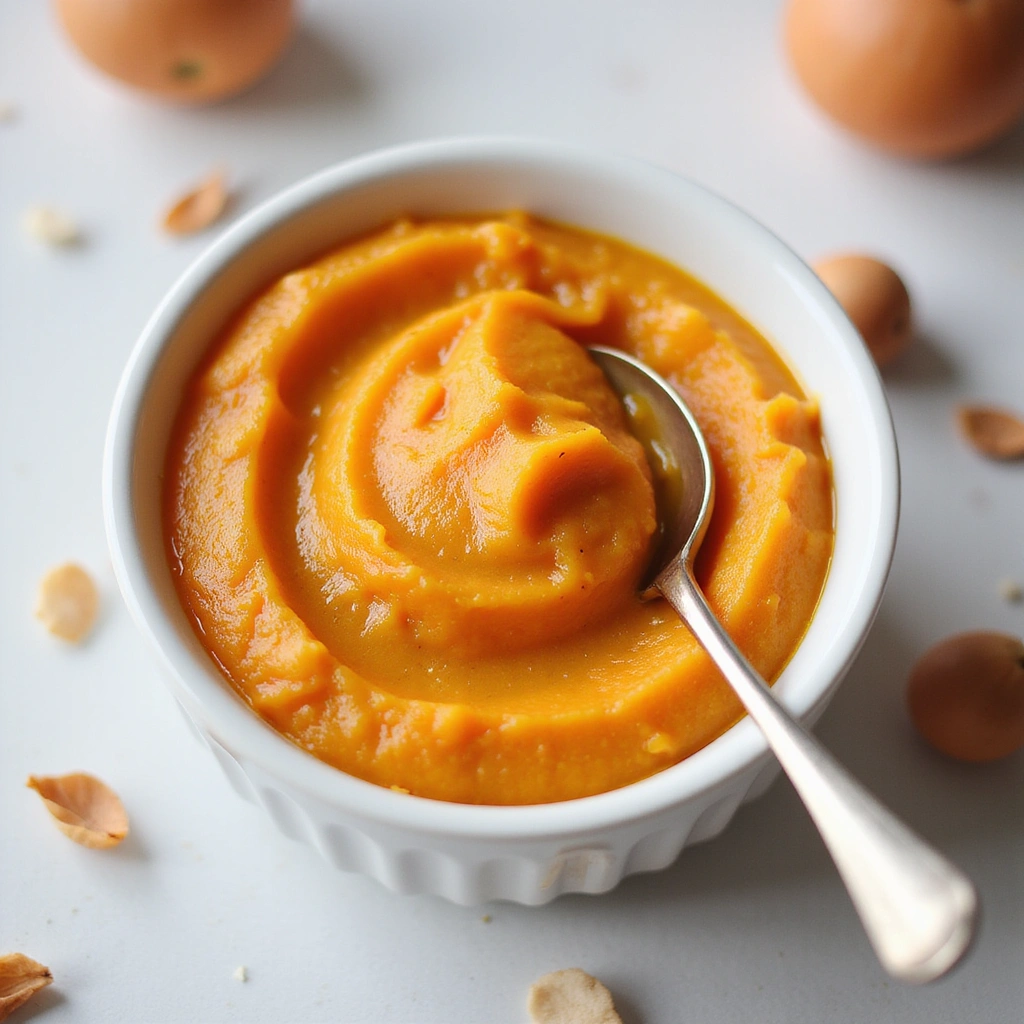
After blending, check the consistency of the puree.
For younger babies, ensure it is a smooth, thin texture.
For older babies, a thicker puree is acceptable.
Adjust by adding more liquid if needed and blend again.
Step 6: Portion and Store
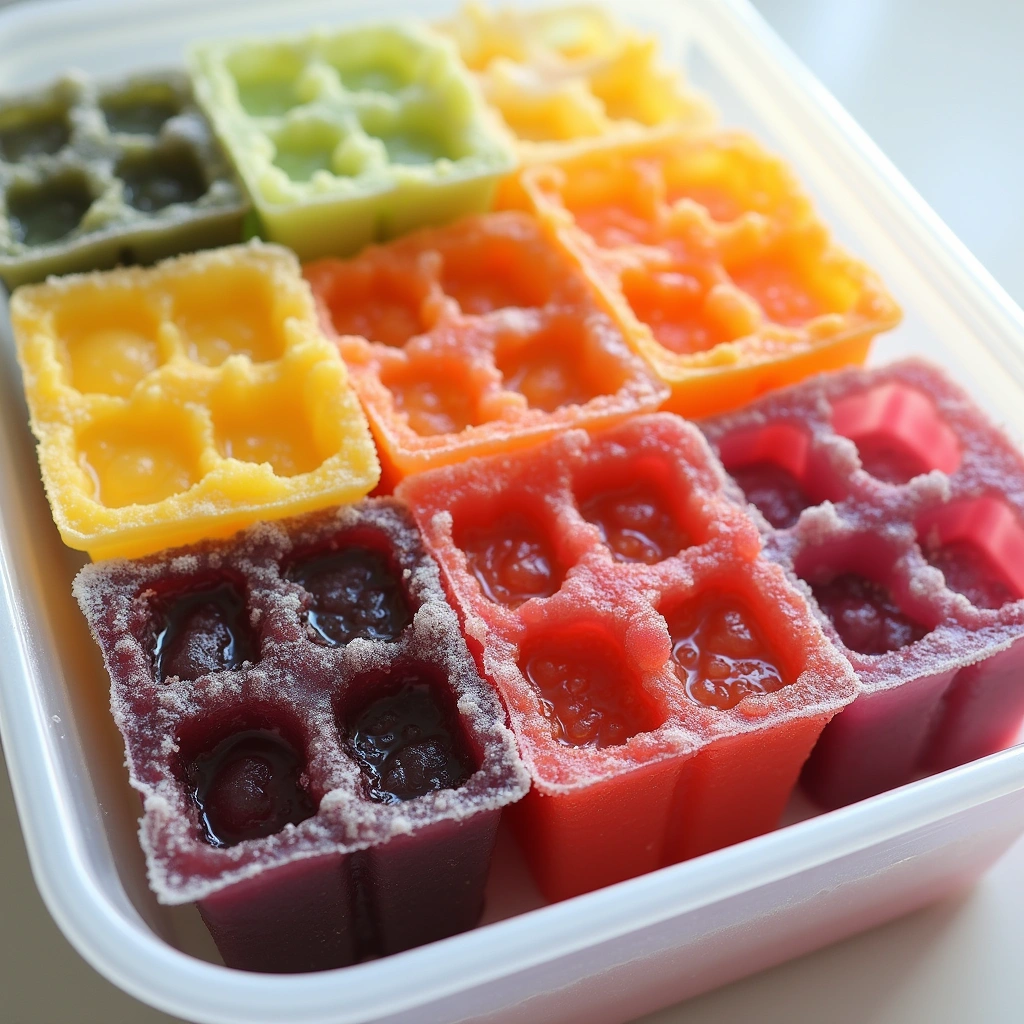
Using a spoon, fill ice cube trays with the puree.
Make sure to leave a little space at the top to allow for expansion when freezing.
Cover the trays with plastic wrap or a lid and place them in the freezer.
Once frozen solid, pop the cubes out and store them in labeled freezer bags.
Step 7: Defrosting Purees
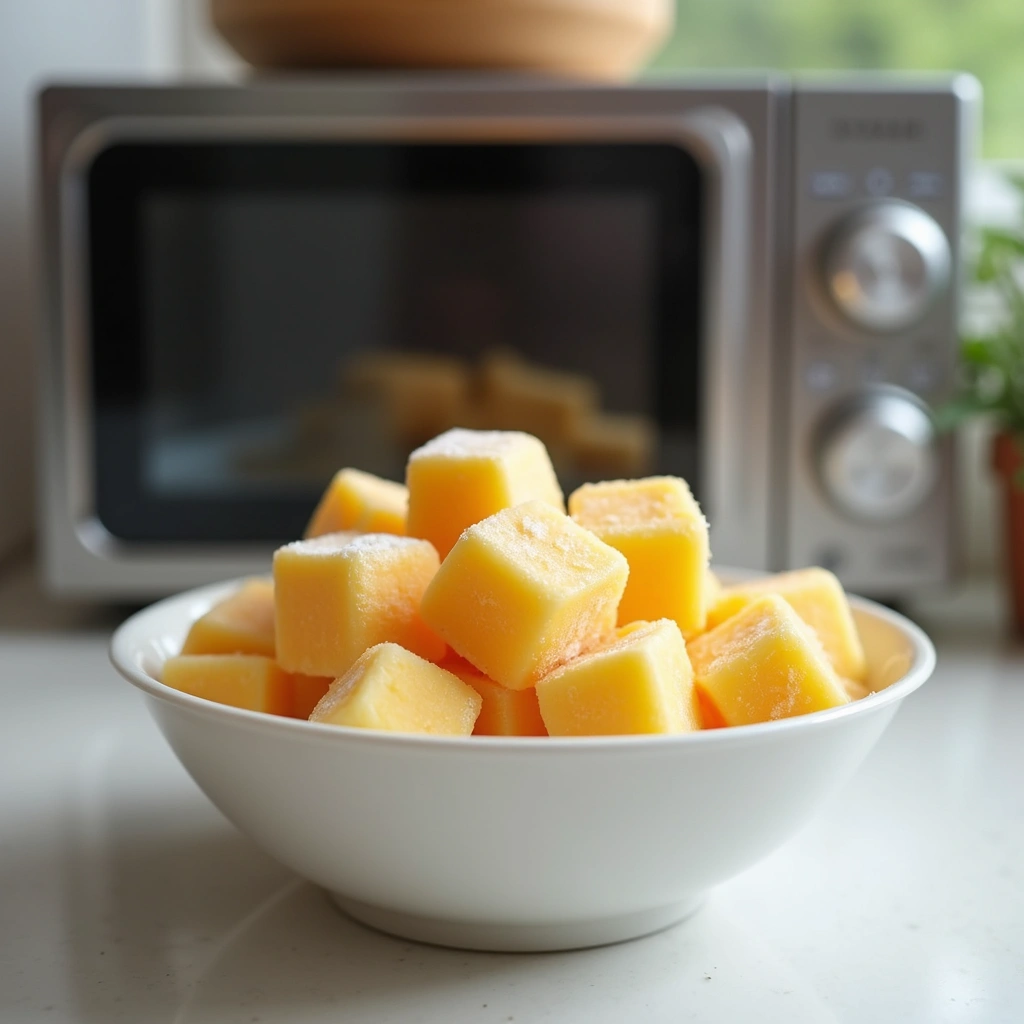
When ready to serve, remove the desired number of puree cubes from the freezer.
Place them in the refrigerator overnight to thaw.
For quicker defrosting, place the cubes in a microwave-safe bowl and use a low power setting.
Always stir well and check the temperature before serving to your baby.
Step 8: Serve and Enjoy
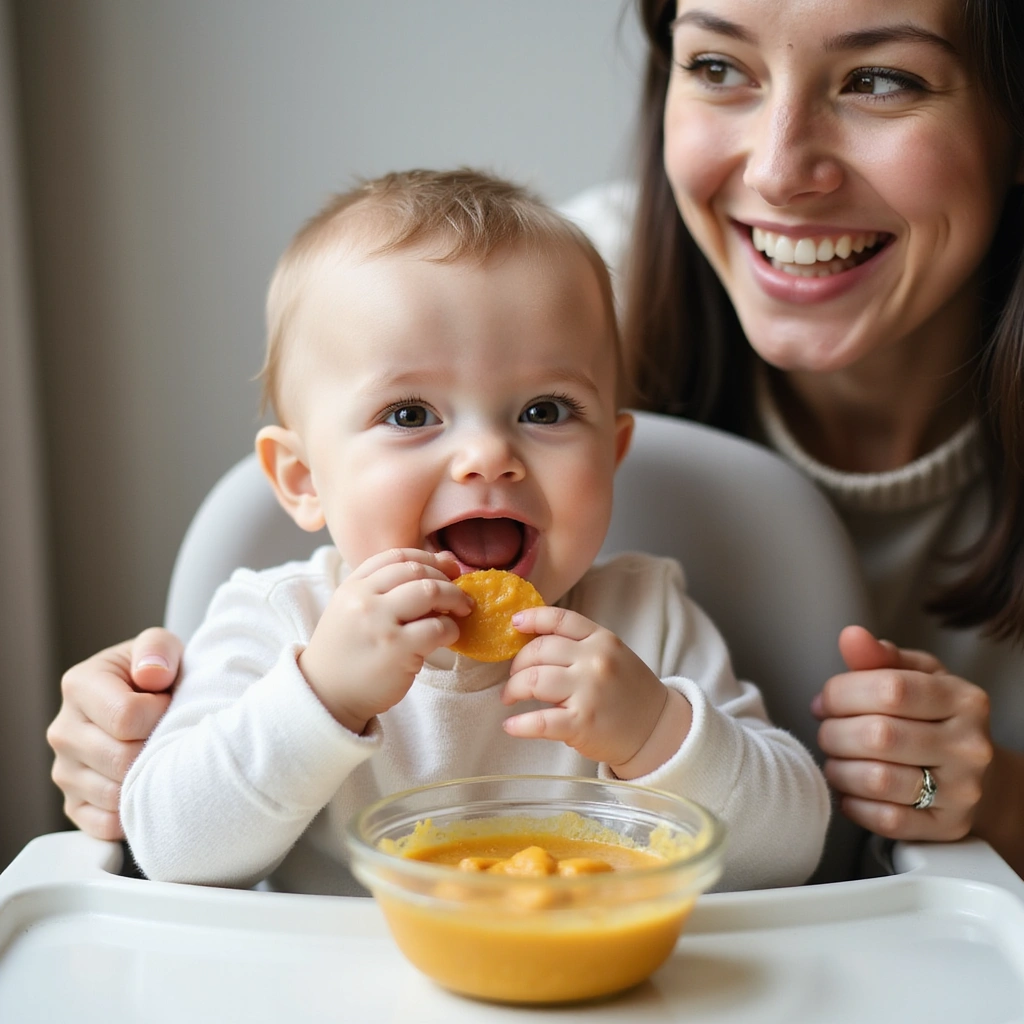
Scoop the thawed puree into a small bowl for serving.
Use a soft, baby-friendly spoon to feed your little one.
Observe their reactions and enjoy this special bonding time.
Remember to introduce new flavors gradually, waiting a few days before trying another new food.
Critical Timing and Temperature Guide
Steaming Vegetables: Steam until tender but not mushy, about 10-12 minutes for sweet potatoes and 5-8 minutes for carrots and peas.
Blending: Blend until smooth, adjusting the consistency with liquid as necessary. Ensure there are no lumps.
Freezing: Freeze purees until solid, typically 2-3 hours, and store in bags for up to three months.
Pro Tips for Gentle Baby Food Recipes
• Ingredient Selection: Opt for organic produce when possible, particularly for fruits and vegetables that are thin-skinned, like peaches and pears.
• Preparation Secret: Cooking vegetables until just tender preserves their natural sweetness and nutrients, enhancing the flavor.
• Temperature Management: Ensure that cooked ingredients cool slightly before blending to avoid steam buildup in the blender.
• Texture Enhancement: For a silkier texture, add a little breast milk or formula when blending.
• Flavor Layering: Introduce mild spices like cinnamon or nutmeg in small amounts to enhance flavor without overwhelming your baby.
• Make-Ahead Strategies: Prepare multiple batches of different purees and freeze them for quick meal options throughout the week.
• Restaurant-Quality Finishing Touches: Serve purees in colorful bowls to make mealtime visually appealing.
• Equipment Optimization: A high-speed blender can significantly improve the smoothness of your purees.
Troubleshooting Common Issues
• Texture Too Chunky: This can occur if vegetables are not cooked long enough. Ensure they are fork-tender before blending, and add more liquid to the blend.
• Flavor Too Bland: If the puree lacks flavor, consider adding a splash of lemon juice or a hint of cinnamon to enhance taste.
• Freezing Issues: If purees develop ice crystals, they may not have been sealed well in storage. Use airtight containers or bags for freezing.
• Color Changes: If purees discolor after freezing, it’s often due to exposure to air. Use proper sealing techniques to prevent oxidation.
• Overcooking: If vegetables become mushy, they can lose nutrients and flavor. Monitor steaming closely to prevent overcooking.
Variations and Regional Differences
• Asian Variation: Incorporate steamed bok choy and ginger for a unique flavor profile that introduces different textures and tastes.
• Latin American Variation: Use avocado and banana for a creamy, nutrient-rich puree that is popular in many cultures.
• Modern Interpretations: Blend traditional ingredients with superfoods like quinoa or chia seeds for added nutrition while maintaining classic flavors.
Food Science Behind the Recipe
• Enzymatic Browning: When fruits like pears are cut, they oxidize, leading to browning. Adding lemon juice prevents this and maintains freshness.
• Nutrient Preservation: Steaming vegetables retains more vitamins compared to boiling, as fewer nutrients leach into the cooking water.
• Emulsification: Blending creates a smooth texture by breaking down cell walls, allowing for easier digestion for babies.
Frequently Asked Questions
What’s the most common mistake people make when preparing baby food? Many forget to check the texture after blending, leading to chunkiness. Always taste and adjust as needed.
Can I prepare components of this dish in advance? Yes, you can cook and freeze purees for up to three months.
How do I adapt this recipe for dietary restrictions? Substitute sweet potatoes with butternut squash for a similar texture and flavor if needed.
What’s the best way to store and reheat leftovers? Store in airtight containers in the fridge for up to 48 hours, and reheat gently in the microwave or on the stovetop.
Can I freeze this dish? Yes, freeze purees in ice cube trays, then transfer to bags for easy portioning.
What wine or beverages pair best with this dish? For parents, a light white wine like Sauvignon Blanc complements the meal, while water is best for the little ones.
How can I scale this recipe up for a crowd? Simply multiply the ingredient amounts while maintaining the same cooking times.
What side dishes complement this recipe best? Soft cooked oats or brown rice can be great additions to a baby’s meal.
How do professional chefs elevate this dish for restaurant service? They might serve with gourmet garnishes or incorporate seasonal ingredients to enhance the flavor profile.
Serving and Presentation Guide
• Traditional Presentation: Serve in small, colorful bowls that are easy for babies to hold, with small spoons for feeding.
• Modern Plating Ideas: Use a silicone mat to create a fun design with purees, making mealtime more engaging.
• Accompaniment Suggestions: Pair with soft, whole-grain toast strips for older babies to explore textures.
• Special Occasion Presentation: Create a mini tasting platter with different purees to introduce a variety of flavors at a family gathering.
Conclusion
I hope you take the time to try these gentle baby food recipes and watch your little one discover new flavors.
Creating homemade purees is not only rewarding but also a healthy choice for your child.
Enjoy every moment of this culinary adventure together!

